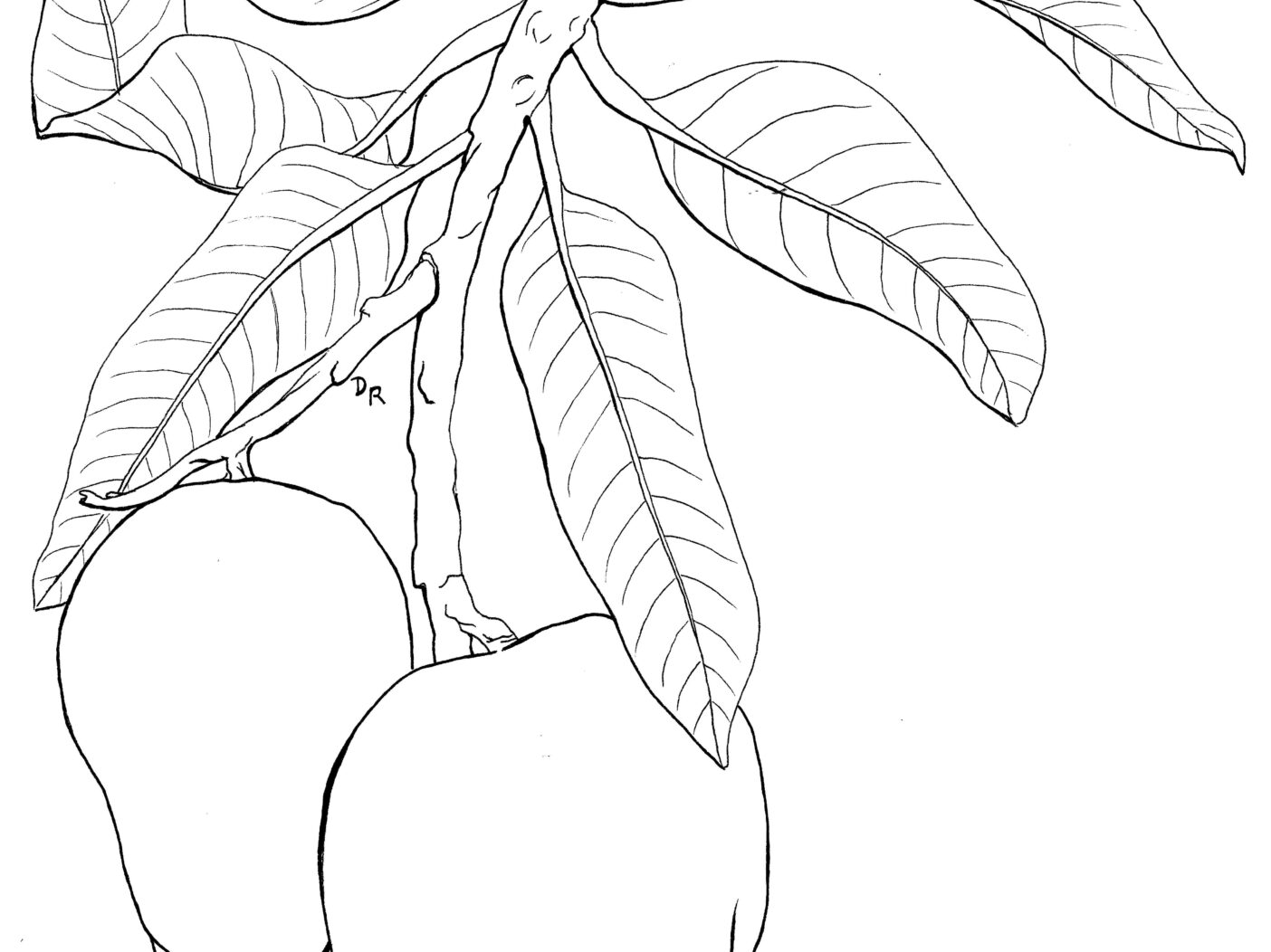
Mango Facts
- Mangos (Mangifera indica) are tropical fruits native to India, where they have been cultivated for over 4,000 years.
- Spanish explorers introduced mangos to South America and Mexico in the 1600s. They were then brought to Florida in 1833 in the first attempt to grow mangos in the United States.
- There are hundreds of different cultivars of Mangifera indica around the world. They differ in size, shape, color, and can be bred to have unique flavors.
- Some people cannot touch mango skin or sap from the tree because they experience a reaction to the irritant urushiol. Plants that produce urushiol are in the family Anacardiaceae, which includes the cashew, poison ivy, sumac, and mango.
- Mangos are drupes, or stone fruits. Like other drupes (cherries, peaches, etc.), a very hard seed, or pit, is surround by the fruit flesh. Only a few species of monkey are known to eat mango pits, and any other animals that might have also eaten the pits are now extinct.
- The flowers are generally pollinated by flies, but ants, wasps, and bees will also do the trick. Once pollinated, it takes four to five months for fruit to be ready for harvesting.
- Humans are not the only ones who enjoy mangos! Fruit bats, birds, monkeys, and chimpanzees are just a few species of wildlife that regularly eat this juicy fruit.
- Mangos are usually eaten ripe, but they can also be enjoyed green in savory slaws and salsas.

Mango: Simply download, print, and color
 About the Artist
About the Artist
Donnamarie Richmond is Education Programs Assistant at Naples Botanical Garden. She is a (mostly) self-taught artist who loves to paint what she finds in nature. She often finds inspiration after climbing a tree or swimming in the sea!

